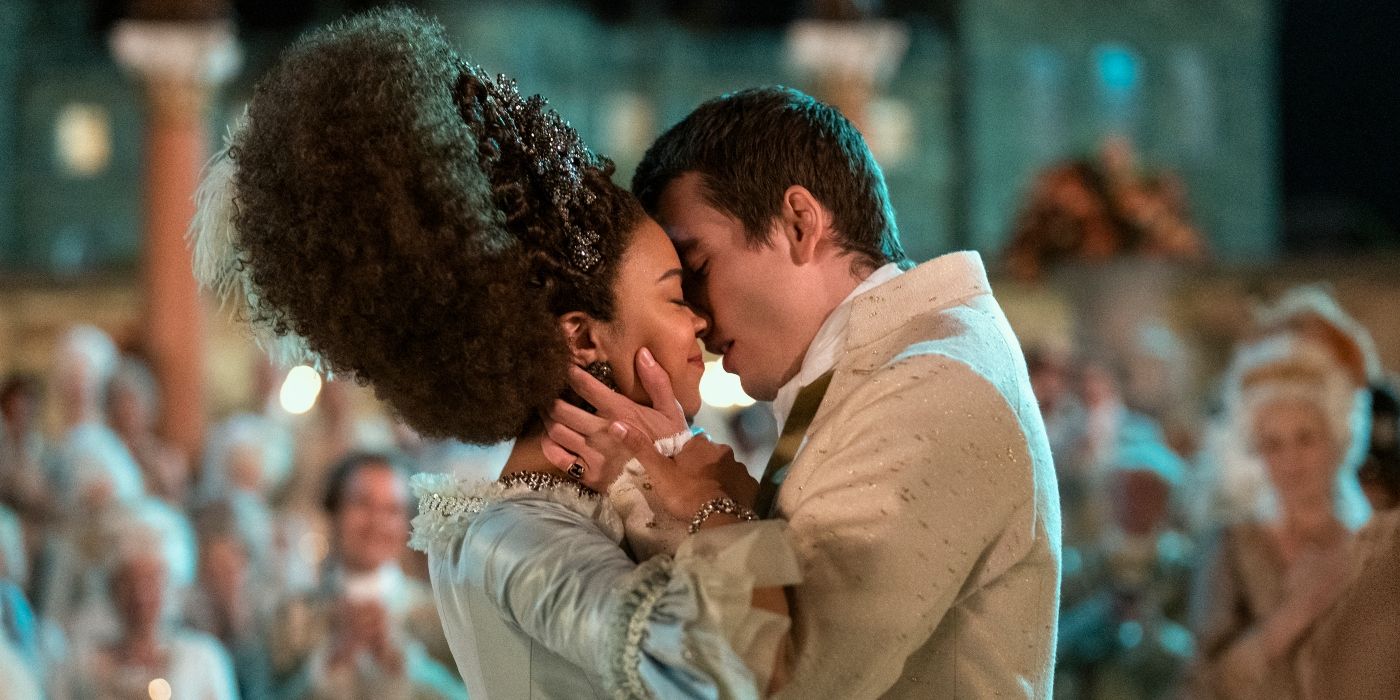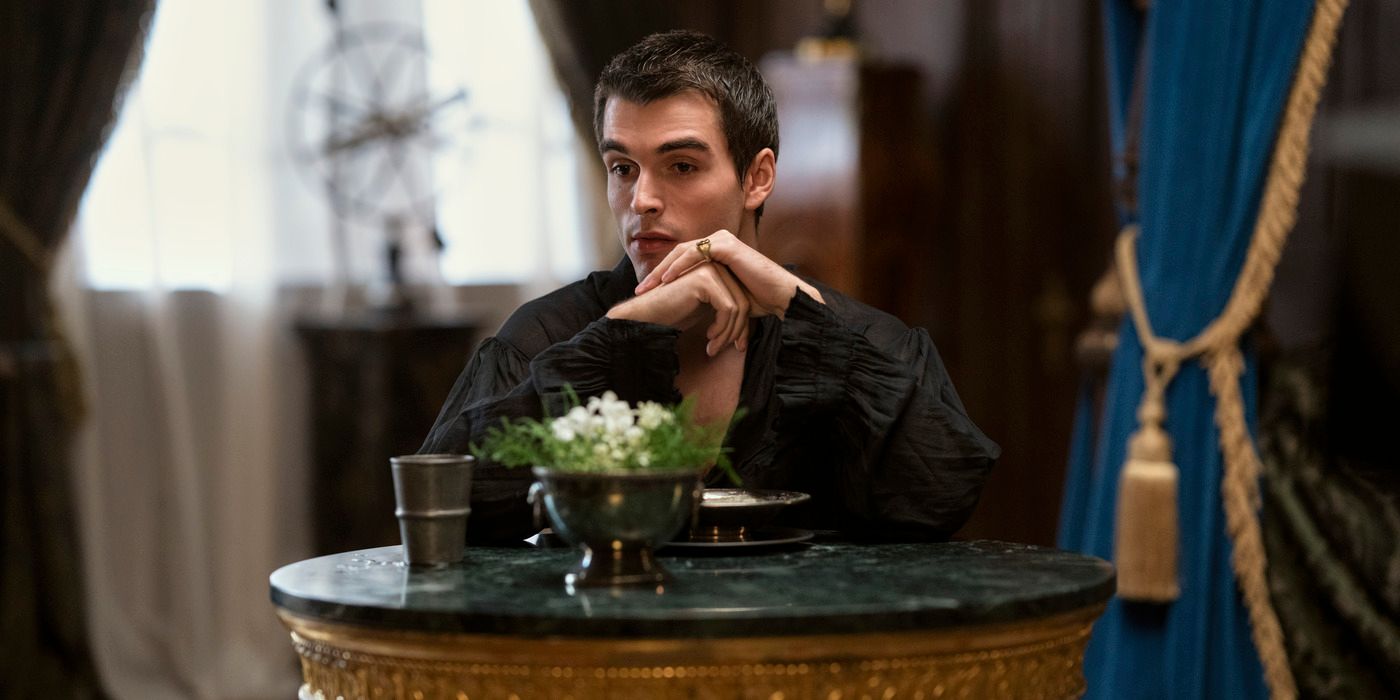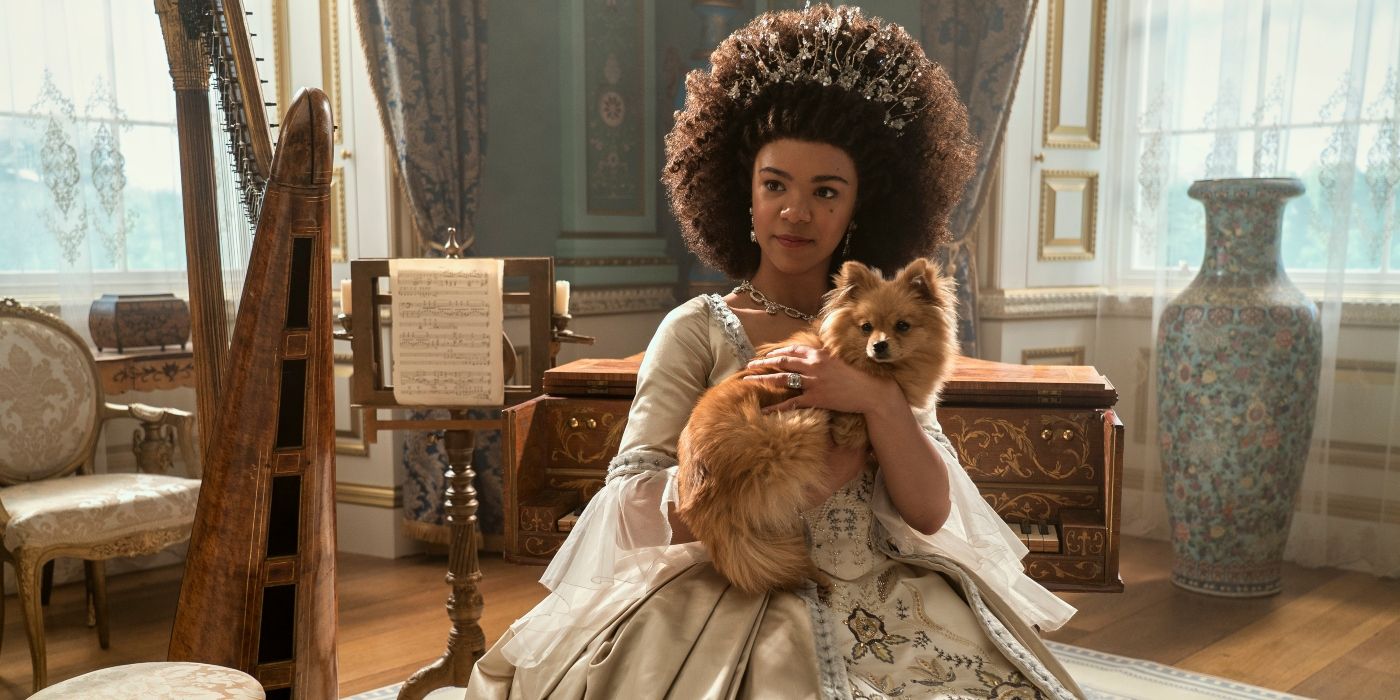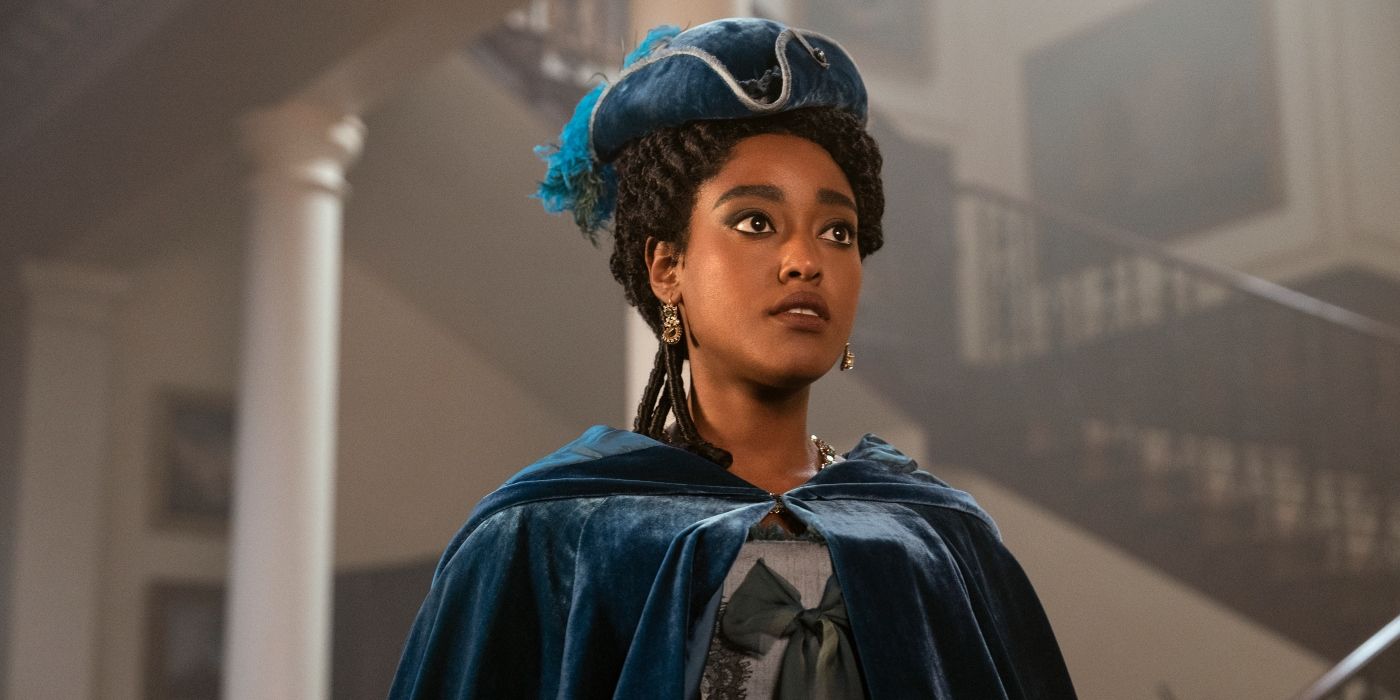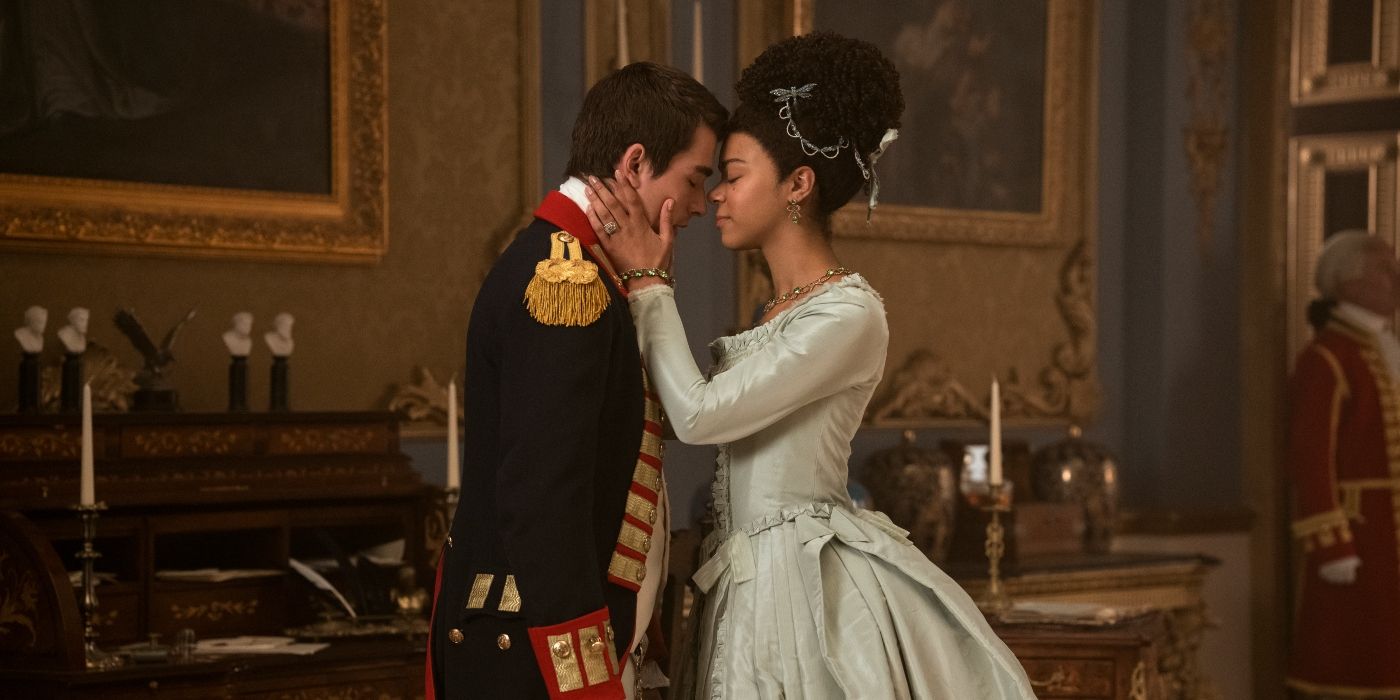Editor's Note: The following contains spoilers for Queen Charlotte: A Bridgerton Story.
Quoting Lady Whistledown from the opening scenes of the Netflix series, Queen Charlotte: A Bridgerton Story, the series is "fiction inspired by fact." This Bridgerton spinoff follows the pasts of three powerful women from the original show with our outlandish wig-wearing Queen Charlotte (Golda Rosheuvel) in the forefront. Inspired by two very real figures from history, the show takes heavy creative liberties with Queen Charlotte's and King George III's love story, but there are many key points that are actually true. With a talented cast and stunning Regency period gowns and architecture, this re-imagining of the royal couple's love story is messy and complicated but beautiful nonetheless.
Was King George III Mad?
As depicted in Queen Charlotte, King George III (Corey Mylchreest) was actually popularly known as "Farmer George," due to his keen interest in agriculture, and "Mad King George," due to his mental health condition. Although there is still debate on the origins and nature of what was reductively termed his "madness," its presence is undeniable since he was forced to hand over the reins of his throne to his son, the Prince Regent, once he reached middle-age. Reports indicated that he experienced convulsions, ramblings, frothing at the mouth and episodes of depression, which later progressed to vision, auditory, memory and mobility losses. The prevalent theory about the cause of the king's symptoms is porphyria, a hereditary physical disease that attacks the nervous system, but more recently historians and medical researchers have suggested he actually had chronic manic episodes associated with bipolar disorder and dementia in his later years. The show decided to run with the latter theory, introducing Dr John Monro (Guy Henry), who deduces George was "merely suffering a disorganization of the nerves," euphemistically alluding to the treasonous claim of "insanity" at the time.
Like in the show, King George was confined to and treated at a home in Kew. However, in real life, he was forced to go instead of willingly accepting the treatments. His royal physician was Dr. Francis Willis, the leading mental health expert at the time, who subjected the king to horrific treatments that were misguided by contemporary beliefs and based on restriction, like Dr Monro explained. On screen, we see limited portrayals of the actual treatments with Corey Mylchreest contorting his face to mimic what could only be a fraction of the pain King George had to endure. But the shots of the closed doors and deafening screams work; its more terrifying to let your imagination fill in the gaps. In real life, the various inhumane treatments the king was reported to have undergone were: straitjackets, arsenic powder skin treatment, fasting and purging, ice-cold baths, isolation and confinement. And unlike the on-screen King George, he had to endure the treatments for the rest of his life until his death in 1820.
Was Queen Charlotte Black?
Portrayed as the first Black queen of England, Queen Charlotte (India Amarteifio) has to navigate the racial implications of her ascendance and the social change that is incited because of it. The figure she was inspired from, Queen Sophia Charlotte of Mecklenburg-Strelitz, was at the center of decades of debates on her racial identity. Since all portraits illustrated with pale skin and her ancestry traced back to German lineages, it was widely accepted that she was white until the 1940s. J.A. Rogers proposed in his book Sex and Race: Volume 1 that her "broad nostrils and heavy lips" indicated she was of Black or biracial descent. Later, a historian even identifies a branch in her ancestry that was from a Black Portuguese royal family, Margarita de Castro e Sousa. However, academic Ania Loomba suggests there was an error in translation, claiming that "moor" does not inherently mean Black but can also refer to "white from North Africa." Her racial identity is still a controversial topic, but it is clear that the Netflix show decided that Queen Charlotte should be Black.
Did the "Great Experiment" Exist?
One of the significant plot lines in Queen Charlotte was the radical "great experiment," where the monarchy catalyzed the desegregation of the Black and white communities of the ton. When George's mother (Michelle Fairley) arranged the marriage between him and Charlotte, she did not expect her to be as dark-toned as she was, but with George's condition and the time constraints on producing an heir, she reluctantly pronounced it the great experiment. Throughout the show, Lady Danbury (Arsema Thomas) pioneered the movement, acting as a spokesperson for her community and using subtle blackmail and bribery to fight for the same privileges white people of the same class and wealth had. Although George's mother fought back every step of the way, Lady Danbury clearly achieves her goals since throughout Bridgerton diverse members of the ton are spared no second glance.
However, in real life there is no evidence of this experiment during this time or at any other point in British history. Segregation was prolific on the streets on England, and although slave trade was abolished in 1807, it wasn't until 1838 that slaves in British colonies were actually freed. So during the Queen Charlotte timeline in 1761, the black population was mainly still in chains, far from being treated as humans let alone being allowed to own land and retain titles of "Lord" and "Lady."
What Was Queen Charlotte's and King George III's Marriage Like?
Queen Charlotte depicts the struggles and pain in the couple's marriage, ending in a lifelong love that was not without its trials, but was love nonetheless. The real love did indeed have an arranged marriage, but all accounts point to Charlotte being a loving and devoted wife. According to the Historic Royal Palaces, Mrs. Phillip Poyse declared in 1788 that "no couple had ever been happier than they were before this greatest of all misfortunes." At the time, the marriage was certainly perceived as successful since they had many children and Charlotte held the record of longest-serving consort at 57 years. Although the couple tried to remain together for as long as possible, the king's deteriorating condition forced them to live separately in the early 1800s until his death.
Queen Charlotte's Children and Heir Crisis
Like in the show, Queen Charlotte did have 13 children that grew into adulthood, although two tragically died at infancy. King George IV, the eldest son, later became Prince Regent than claimed the throne after his father's death. The major dilemma facing Queen Charlotte in the "present-day" timeline of the series was securing her royal line and finding a viable heir. Unfortunately, her sons were notorious for indulging in the conception of illegitimate heirs, something that became a major complication once Princess Charlotte passed away. This is actually accurate to what happened in real life and was a very real crisis for the queen and the monarchy. The queen's sons finally found suitable wives and eventually produced an heir, one of which was Queen Victoria, who later became the longest reigning monarch, surpassed only by Queen Elizabeth II, who ruled from 1952 until her death in September 2022.

